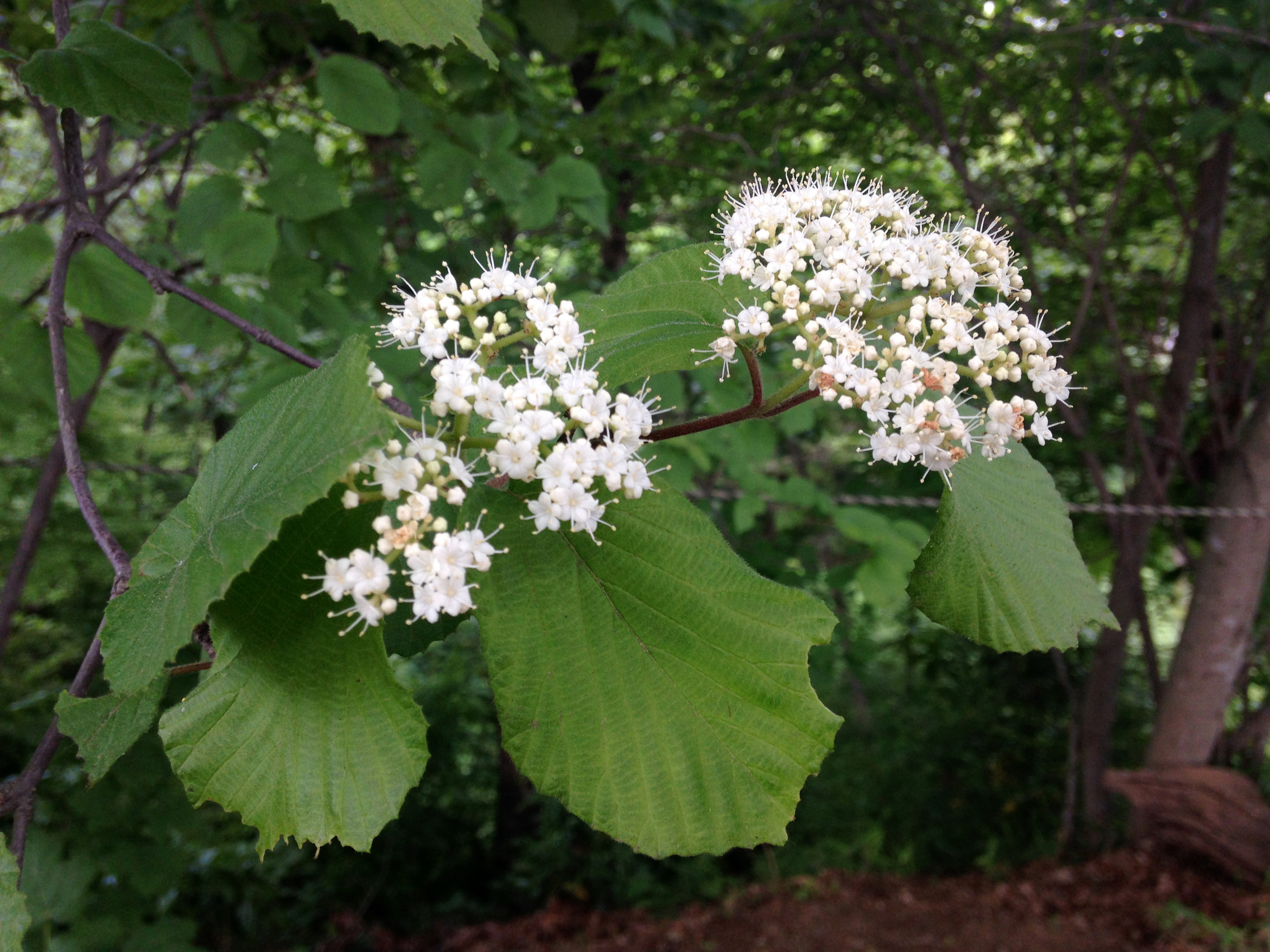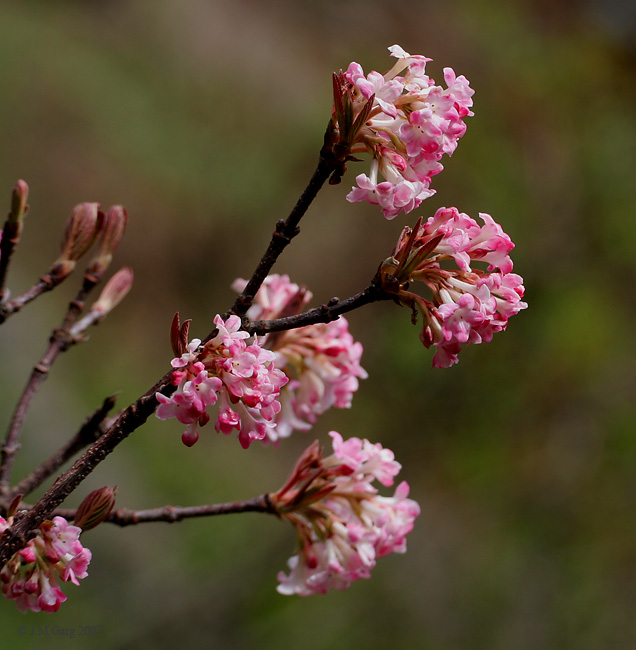|
Viburnum Dilatatum
''Viburnum dilatatum'', commonly known as linden arrowwood or linden viburnum, is a deciduous shrub in the moschatel family (Adoxaceae). It is native to eastern Asia, and can be found as an introduced plant in the mid-Atlantic regions in the U.S from New York to Virginia. Linden arrowwood is known for the clusters of red drupes it produces when it is mature. Description ''Viburnum dilatatum'' can grow up to 3 meters tall and wide. The bark of the stems are brown with some orange, the stems are pubescent, and stems change color from brown to a dark gray as they mature. The leaves are simple, arranged opposite on a branch and the shape may vary from broadly obovate, obovate, or broadly ovate. The size of the leaf ranges from long and wide. The leaves have shallowly toothed margins, usually are pubescent and they drop in late autumn. With the season change, linden arrowwood foliage changes. During the summer the foliage is dark green and during the autumn season the colors vary fr ... [...More Info...] [...Related Items...] OR: [Wikipedia] [Google] [Baidu] |
Carl Peter Thunberg
Carl Peter Thunberg, also known as Karl Peter von Thunberg, Carl Pehr Thunberg, or Carl Per Thunberg (11 November 1743 – 8 August 1828), was a Sweden, Swedish Natural history, naturalist and an Apostles of Linnaeus, "apostle" of Carl Linnaeus. After studying under Linnaeus at Uppsala University, he spent seven years travelling in southern Italy and Asia, collecting and describing people and animals new to European science, and observing local cultures. He has been called "the father of South African botany", "pioneer of Occidental Medicine in Japan", and the "Japanese Carl Linnaeus, Linnaeus". Early life Thunberg was born and grew up in Jönköping, Sweden. At the age of 18, he entered Uppsala University where he was taught by Carl Linnaeus, regarded as the "father of modern Taxonomy (biology), taxonomy". Thunberg graduated in 1767 after 6 years of studying. To deepen his knowledge in botany, medicine and natural history, he was encouraged by Linnaeus in 1770 to travel to P ... [...More Info...] [...Related Items...] OR: [Wikipedia] [Google] [Baidu] |
Mid-Atlantic Region
The Mid-Atlantic is a region of the United States located in the overlap between the nation's Northeastern and Southeastern states. Traditional definitions include seven U.S. states: New York, New Jersey, Pennsylvania, Delaware, Maryland, Virginia, West Virginia, and the national capital of Washington, D.C.. Depending on various factors, different regional divisions exist however: the U.S. Bureau of Labor Statistics in its newest regional division excludes New York from the region; the US Census Bureau excludes Delaware, Maryland, Virginia and West Virginia from the region; USGS defines the region by watersheds thus additionally including North Carolina;Earl A. Greene et al"Ground-Water Vulnerability to Nitrate Contamination in the Mid-Atlantic Region". USGS Fact Sheet FS 2004-3067. 2005. Retrieved April 25, 2013. Note: Although the locator map appears to exclude part of northwestern Pennsylvania, other more detailed maps in this article include all of the state. Often, when di ... [...More Info...] [...Related Items...] OR: [Wikipedia] [Google] [Baidu] |
Fauna
Fauna (: faunae or faunas) is all of the animal life present in a particular region or time. The corresponding terms for plants and fungi are ''flora'' and '' funga'', respectively. Flora, fauna, funga and other forms of life are collectively referred to as '' biota''. Zoologists and paleontologists use ''fauna'' to refer to a typical collection of animals found in a specific time or place, e.g. the " Sonoran Desert fauna" or the " Burgess Shale fauna". Paleontologists sometimes refer to a sequence of faunal stages, which is a series of rocks all containing similar fossils. The study of animals of a particular region is called faunistics. Etymology ''Fauna'' comes from the name Fauna, a Roman goddess of earth and fertility, the Roman god Faunus, and the related forest spirits called Fauns. All three words are cognates of the name of the Greek god Pan, and ''panis'' is the Modern Greek equivalent of fauna (πανίς or rather πανίδα). ''Fauna'' is also the word fo ... [...More Info...] [...Related Items...] OR: [Wikipedia] [Google] [Baidu] |
Vermifuge
Anthelmintics or antihelminthics are a group of antiparasitic drugs that expel parasitic worms (helminths) and other internal parasites from the body by either stunning or killing them without causing significant damage to the host. They may also be called vermifuges (those that stun) or vermicides (those that kill). Anthelmintics are used to treat people who are infected by helminths, a condition called helminthiasis. These drugs are also used to treat infected animals, particularly small ruminants such as goats and sheep. Anthelmintic medication is also used in mass deworming campaigns of school-aged children in many developing countries. Anthelmintics are also used for mass deworming of livestock. The drugs of choice for soil-transmitted helminths are mebendazole and albendazole; for schistosomiasis and tapeworms it is praziquantel. Types Many early treatments were herbal, such as the oil of herbs of the genus '' Chenopodium'' that were given as anthelmintic treatment for c ... [...More Info...] [...Related Items...] OR: [Wikipedia] [Google] [Baidu] |
Dysentery
Dysentery ( , ), historically known as the bloody flux, is a type of gastroenteritis that results in bloody diarrhea. Other symptoms may include fever, abdominal pain, and a feeling of incomplete defecation. Complications may include dehydration. The cause of dysentery is usually the bacteria from genus '' Shigella'', in which case it is known as shigellosis, or the amoeba '' Entamoeba histolytica''; then it is called amoebiasis. Other causes may include certain chemicals, other bacteria, other protozoa, or parasitic worms. It may spread between people. Risk factors include contamination of food and water with feces due to poor sanitation. The underlying mechanism involves inflammation of the intestine, especially of the colon. Efforts to prevent dysentery include hand washing and food safety measures while traveling in countries of high risk. While the condition generally resolves on its own within a week, drinking sufficient fluids such as oral rehydration solutio ... [...More Info...] [...Related Items...] OR: [Wikipedia] [Google] [Baidu] |
Snake Bite
A snakebite is an injury caused by the bite of a snake, especially a venomous snake. A common sign of a bite from a venomous snake is the presence of two puncture wounds from the animal's fangs. Sometimes venom injection from the bite may occur. This may result in redness, swelling, and severe pain at the area, which may take up to an hour to appear. Vomiting, blurred vision, tingling of the limbs, and sweating may result. Most bites are on the hands, arms, or legs. Fear following a bite is common with symptoms of a racing heart and feeling faint. The venom may cause bleeding, kidney failure, a severe allergic reaction, tissue death around the bite, or breathing problems. Bites may result in the loss of a limb or other chronic problems or even death. The outcome depends on the type of snake, the area of the body bitten, the amount of snake venom injected, the general health of the person bitten, and whether or not anti-venom serum has been administered by a doctor in ... [...More Info...] [...Related Items...] OR: [Wikipedia] [Google] [Baidu] |
Traditional Chinese Medicine
Traditional Chinese medicine (TCM) is an alternative medicine, alternative medical practice drawn from traditional medicine in China. A large share of its claims are pseudoscientific, with the majority of treatments having no robust evidence of effectiveness or logical mechanism of action. Some TCM ingredients Traditional Chinese medicine#Safety, are known to be toxic and cause disease, including cancer. Medicine in traditional China encompassed a range of sometimes competing health and healing practices, folk beliefs, Scholar-official, literati theory and Confucianism, Confucian philosophy, Chinese herbology, herbal remedies, Chinese food therapy, food, diet, exercise, medical specializations, and schools of thought. TCM as it exists today has been described as a largely 20th century invention. In the early twentieth century, Chinese cultural and political modernizers worked to eliminate traditional practices as backward and unscientific. Traditional practitioners then selec ... [...More Info...] [...Related Items...] OR: [Wikipedia] [Google] [Baidu] |
Invasive Species
An invasive species is an introduced species that harms its new environment. Invasive species adversely affect habitats and bioregions, causing ecological, environmental, and/or economic damage. The term can also be used for native species that become harmful to their native environment after human alterations to its food web. Since the 20th century, invasive species have become serious economic, social, and environmental threats worldwide. Invasion of long-established ecosystems by organisms is a natural phenomenon, but human-facilitated introductions have greatly increased the rate, scale, and geographic range of invasion. For millennia, humans have served as both accidental and deliberate dispersal agents, beginning with their earliest migrations, accelerating in the Age of Discovery, and accelerating again with the spread of international trade. Notable invasive plant species include the kudzu vine, giant hogweed (''Heracleum mantegazzianum''), Japanese knotw ... [...More Info...] [...Related Items...] OR: [Wikipedia] [Google] [Baidu] |
Caprifoliaceae
The Caprifoliaceae or honeysuckle family is a clade of dicotyledonous flowering plants consisting of about 860 species in 33 to 42 genera, with a nearly cosmopolitan distribution. Centres of diversity are found in eastern North America and eastern Asia, while they are absent in tropical and southern Africa. Description The flowering plants in this clade are mostly shrubs and vines: rarely herbs. They include some ornamental garden plants grown in temperate regions. The leaf, leaves are mostly opposite with no stipules (appendages at the base of a leafstalk or leaf, petiole), and may be either evergreen or deciduous. The flowers are tubular funnel-shaped or bell-like, usually with five outward spreading lobes or points, and are often fragrant. They usually form a small Sepal, calyx with small bracts. The fruit is in most cases a berry (botany), berry or a drupe. The genera ''Diervilla'' and ''Weigela'' have Capsule (fruit), capsular fruit, while ''Heptacodium'' has an achene. Tax ... [...More Info...] [...Related Items...] OR: [Wikipedia] [Google] [Baidu] |
Korea National Arboretum
Korea National Arboretum (), also called Gwangneung Forest (), is an arboretum in Pocheon, Gyeonggi Province, South Korea. It is designated as a UNESCO World Network of Biosphere Reserve in 2010. The arboretum includes the white-bellied woodpecker and 900 plant species. History Its history can be traced back to the Joseon period. The planting of large forests started during the reign of King Sejo. He and Queen Jeonghui designated the area for a tomb which later named ''Gwangneung.'' Their tomb is one of Royal Tombs of the Joseon Dynasty, a UNESCO World Heritage Site. Following the construction of the tomb, it and its surrounding areas were designated as royal forest and kept under strict protection which lasted throughout post-Joseon history. The area was devastated during the Korean War The Korean War (25 June 1950 – 27 July 1953) was an armed conflict on the Korean Peninsula fought between North Korea (Democratic People's Republic of Korea; DPRK) and South Kore ... [...More Info...] [...Related Items...] OR: [Wikipedia] [Google] [Baidu] |
Stamen
The stamen (: stamina or stamens) is a part consisting of the male reproductive organs of a flower. Collectively, the stamens form the androecium., p. 10 Morphology and terminology A stamen typically consists of a stalk called the filament and an anther which contains sporangium, microsporangia. Most commonly, anthers are two-lobed (each lobe is termed a locule) and are attached to the filament either at the base or in the middle area of the anther. The sterile (i.e. nonreproductive) tissue between the lobes is called the Connective (botany), connective, an extension of the filament containing conducting strands. It can be seen as an extension on the dorsal side of the anther. A pollen grain develops from a microspore in the microsporangium and contains the male gametophyte. The size of anthers differs greatly, from a tiny fraction of a millimeter in ''Wolfia'' spp up to five inches (13 centimeters) in ''Canna iridiflora'' and ''Strelitzia nicolai''. The stamens in a flower ... [...More Info...] [...Related Items...] OR: [Wikipedia] [Google] [Baidu] |
Viburnum Dilatatum Japan
''Viburnum'' is a genus of about 150–175 species of flowering plants in the moschatel family, Adoxaceae. Its current classification is based on molecular phylogeny. It was previously included in the honeysuckle family Caprifoliaceae. The member species are evergreen or deciduous shrubs or (in a few cases) small trees native throughout the temperate Northern Hemisphere, with a few species extending into tropical montane regions in South America and southeast Asia. In Africa, the genus is confined to the Atlas Mountains. Name The generic name ''Viburnum'' originated in Latin, in which it referred to '' V. lantana''. Description The leaves are opposite, simple, and entire, with toothed or lobed margins. Cool temperate species are deciduous, while most of the warm temperate species are evergreen. Some species have densely hairy shoots and leaves covered in star-shaped hairs. The flowers are produced in corymbs 5–15 cm across. Each flower is white, cream or pink, smal ... [...More Info...] [...Related Items...] OR: [Wikipedia] [Google] [Baidu] |











